Feeling Whimsy |
|
 |
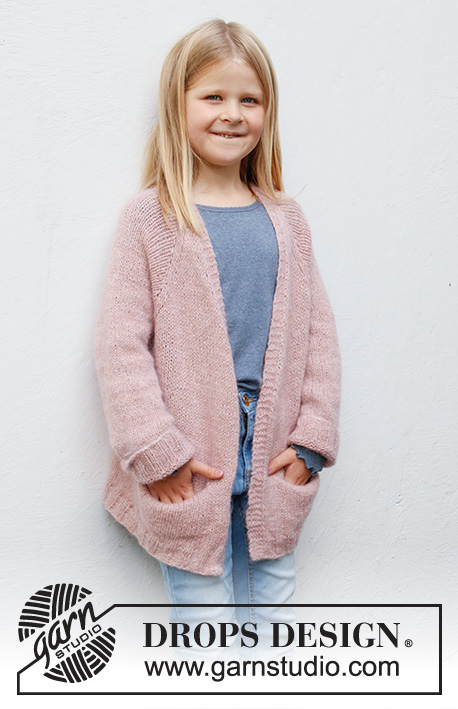 |
Knitted jacket for children in DROPS Sky and DROPS Kid-Silk. The piece is worked top down, with raglan and pockets. Sizes 3 to 14 years.
DROPS Baby & Children 38-19 |
|
|
------------------------------------------------------- EXPLANATIONS FOR THE PATTERN: ------------------------------------------------------- RIDGE/GARTER STITCH (worked back and forth): Knit all rows. 1 ridge in height = Knit 2 rows. INCREASE TIP (evenly spaced): To work out how to increase evenly, count the total number of stitches on the needle (e.g. 110 stitches) minus the bands (e.g. 10 stitches) and divide the remaining stitches by the number of increases to be made (e.g. 10) = 10. In this example, increase by making 1 yarn over after each 10th stitch. Do not increase on the bands. On the next row (wrong side) purl the yarn overs twisted to avoid holes. RAGLAN: All increases are worked from the right side! Increase to raglan in each transition between body and sleeves as follows: Work until there is 1 stitch left before marker thread, 1 yarn over, knit 2 (marker thread sits between these 2 stitches), 1 yarn over (= 2 stitches increased). On the next row (wrong side) purl the yarn overs twisted to avoid holes. Then work the new stitches in stocking stitch. A total of 8 stitches are increased on each increase-row. V-NECK: All increases are worked from the right side! Make 1 yarn over inside the 5 band stitches and knit 1 (= 1 stitch increased on both sides). On the next row (wrong side) purl the yarn overs twisted to avoid holes. Then work the new stitches in stocking stitch. A total of 2 stitches increased on each increase-row). DECREASE TIP (for sleeves): Decrease 1 stitch on either side of the marker thread as follows: Work until there are 3 stitches left before the marker thread, knit 2 together, knit 2 (marker thread sits between these 2 stitches), slip 1 stitch as if to knit, knit 1 and pass the slipped stitch over the knitted stitch. CASTING-OFF TIP: To avoid the cast-off edge being tight you can cast off with a larger size needle. If the edge is still tight, make 1 yarn over after approx. each 6th stitch at the same time as casting off; the yarn overs are cast off as normal stitches. ------------------------------------------------- START THE PIECE HERE: ------------------------------------------------------- JACKET – SHORT OVERVIEW OF THE PIECE: The 2 pockets are worked first and will be worked into the piece later. Then you work 2 collar-pieces, which are then placed on circular needle when casting on stitches for the neck, as described in the text (the collar-pieces are sewn together mid-back and to the back of the neck to finish). The yoke is continued back and forth with circular needle, from mid front and top down. AT THE SAME TIME stitches are increased for the V-neck and for raglan. The yoke is divided for the body and sleeves and the body continued back and forth with circular needle, then the pockets are continued. The sleeves are worked in the round with double pointed needles/short circular needle, top down. POCKETS (first half): Cast on 22-22-24-24-26-26 stitches (including 1 edge stitch on each side) with needle size 5.5 mm and 1 strand Sky and 1 strand Kid-Silk (= 2 strands). Work stocking stitch with 1 edge stitch in GARTER STITCH – read description above, on each side. REMEMBER THE KNITTING TENSION! When the piece measures 8-8-8-10-10-10 cm cast off both edge stitches = 20-20-22-22-24-24 stitches. Place the stitches on 1 thread. Work 1 more pocket in the same way. Lay them to one side. The other half of the pockets are worked and assembled to finish. COLLAR: Cast on 5 stitches with needle size 5.5 mm and 1 strand Sky and 1 strand Kid-Silk (= 2 strands) and work garter stitch back and forth (row 1 = right side) for 8-8-8-10-11-11 cm. Cut the strand and lay the collar to one side. Work 1 more collar in the same way. Place the second collar-piece on circular needle size 5.5 mm without cutting the strand, cast on 36-36-36-46-48-48 stitches and then knit the 5 stitches from the first collar-piece = 46-46-46-56-58-58 stitches. Purl 1 row from the wrong side over all stitches. Work the yoke as described below. YOKE: READ THE WHOLE SECTION BEFORE CONTINUING! Place 4 markers in the piece without working the stitches as follows: Count 7 stitches (= front piece), insert 1 marker before the next stitch, count 8-8-8-12-12-12 stitches (= sleeve), insert 1 marker before the next stitch, count 16-16-16-18-20-20 stitches (= back piece), insert 1 marker before the next stitch, count 8-8-8-12-12-12 stitches (= sleeve), insert 1 marker before the next stitch. There are 7 stitches left after the last marker in all sizes (= front piece). Continue with stocking stitch and 5 band stitches in garter stitch on each side towards mid front – AT THE SAME TIME on the first row from the right side, increase to RAGLAN in each transition between body and sleeves – read description above. Increase to raglan every 2nd row (i.e. each row from the right side) a total of 14-16-16-17-17-18 times. AT THE SAME TIME on row 4 (i.e. 2nd row from the right side) increase to V-NECK on each side towards mid front – read description above, as follows: Increase every 4th row a total of 6-6-7-7-8-8 times. After the last increase to raglan and after all increases for neck are worked the piece measures approx. 16-19-19-20-20-21 cm from the cast-on edge and there are 170-186-188-206-210-218 stitches. The next row is worked as follows from the wrong side: Work the first 27-29-30-31-32-33 stitches as before (= front piece), place the next 36-40-40-46-46-48 stitches on 1 thread for the sleeve, cast on 6-6-8-8-8-10 stitches (= in side under sleeve), purl 44-48-48-52-54-56 (= back piece), place the next 36-40-40-46-46-48 stitches on 1 thread for the sleeve, cast on 6-6-8-8-8-10 stitches (= in side under sleeve) and work the last 27-29-30-31-32-33 stitches as before (= front piece). Body and sleeves are finished separately. THE PIECE IS NOW MEASURED FROM HERE! BODY: = 110-118-124-130-134-142 stitches. Continue with stocking stitch and 5 band stitches in garter stitch on each side. When the piece measures approx. 13-14-18-18-21-23 cm from the division, work the next row from the right side as follows: Work the first 11-11-11-13-13-13 stitches, place the next 20-20-22-22-24-24 stitches on 1 thread (the other half of the pocket will be worked here later), work the 20-20-22-22-24-24 stitches from the one pocket (make sure you continue on the right side of the pocket), work until there are 31-31-33-35-37-37 stitches left on the row, place the next 20-20-22-22-24-24 stitches on 1 thread, work the 20-20-22-22-24-24 stitches from the other pocket (make sure you continue on the right side of the pocket) and work the last 11-11-11-13-13-13 stitches. Continue with stocking stitch and 5 band stitches in garter stitch on each side. When the piece measures 21-22-26-28-31-33 cm from the division, knit 1 row from the right side where you increase 10-10-12-14-14-14 stitches evenly spaced – read INCREASE TIP = 120-128-136-144-148-156 stitches. Purl 1 row from the wrong side (bands worked in garter stitch). Change to circular needle size 4.5 mm and work the next row from the right side as follows: 5 band stitches in garter stitch, * knit 2, purl 2 *, work from *-* until there are 7 stitches left, knit 2 and 5 band stitches in garter stitch. Continue this rib for 6 cm. Loosely cast off with garter stitch over garter stitch, knit over knit and purl over purl – read CASTING-OFF TIP! The jacket measures approx. 46-50-54-58-61-64 cm from the shoulder down. SLEEVES: Place the 36-40-40-46-46-48 stitches from the thread on the one side of the piece on double pointed needles/short circular needle size 5.5 mm and knit up 1 stitch in each of the 6-6-8-8-8-10 stitches cast on under the sleeve = 42-46-48-54-54-58 stitches. Insert a marker thread in the middle of the new stitches under the sleeve. Start the round at the marker thread and work stocking stitch in the round. When the sleeve measures 3 cm from the division, decrease 2 stitches mid-under the sleeve – read DECREASE TIP. Decrease like this every 3-3-3½-3-3½-3½ cm a total of 6-7-7-10-9-10 times = 30-32-34-34-36-38 stitches. Continue working without further increases, until the sleeve measures 23-25-30-33-38-42 cm from the division. There is approx. 6 cm left to finished length; try the jacket on and work to desired length. Knit 1 round where you increase 6-8-6-10-8-10 stitches evenly spaced = 36-40-40-44-44-48 stitches. Change to double pointed needles size 4.5 mm and work rib (knit 2, purl 2) for 4 cm. Cast off with knit over knit and purl over purl – remember CASTING-OFF TIP! The sleeve measures approx. 29-31-36-39-44-48 cm from the division. Work the other sleeve in the same way. POCKETS: Worked back and forth. Place the 20-20-22-22-24-24 stitches from the thread on the right front piece on circular needle size 5.5 mm. On the first row cast on 1 edge stitch on each side = 22-22-24-24-26-26 stitches. Work stocking stitch with 1 edge stitch in garter stitch on each side until the pocket measures 8-8-8-10-10-10 cm, loosely cast off. Work the pocket on the left front piece in the same way. ASSEMBLY: Sew the pockets together, inside the 1 edge stitch. Then fasten to the inside of the jacket with small, neat stitches in each of the bottom corners (should not be visible on the right side). Sew the collar together at the back, with the seam on the wrong side. Stretch the collar slightly and sew it to the neckline at the back. |
|

|
|
|
Have you made this or any other of our designs? Tag your pictures in social media with #dropsdesign so we can see them! Do you need help with this pattern?You'll find tutorial videos, a Comments/Questions area and more by visiting the pattern on garnstudio.com. © 1982-2024 DROPS Design A/S. We reserve all rights. This document, including all its sub-sections, has copyrights. Read more about what you can do with our patterns at the bottom of each pattern on our site. |
|

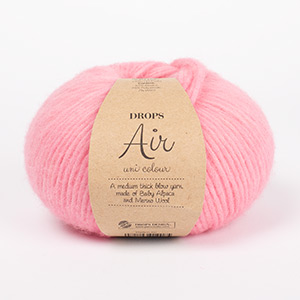






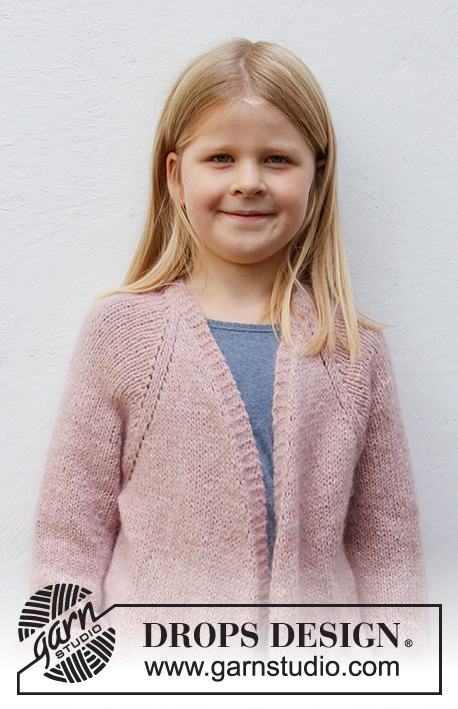





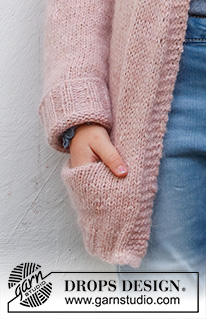

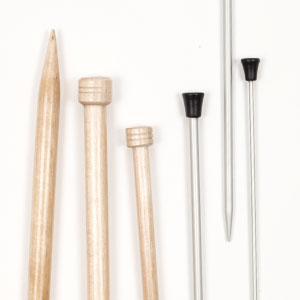
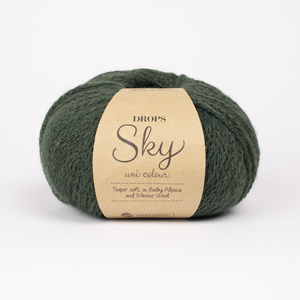
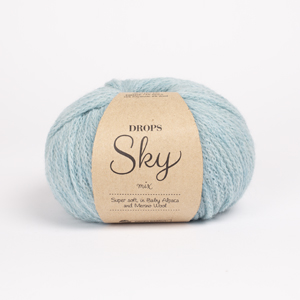
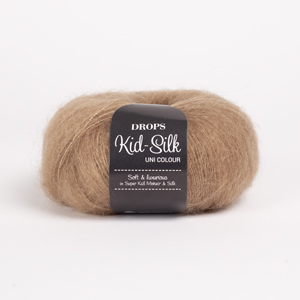

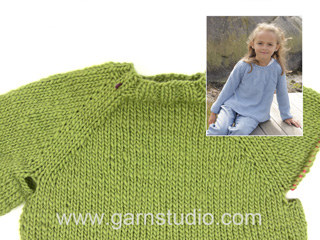
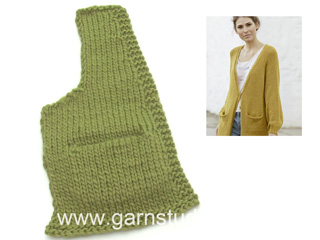
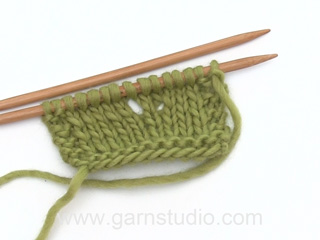

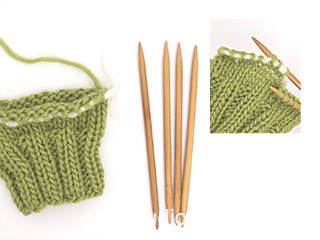

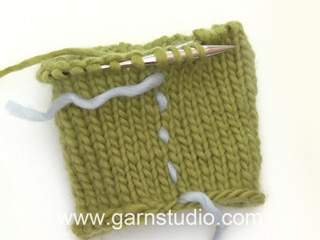
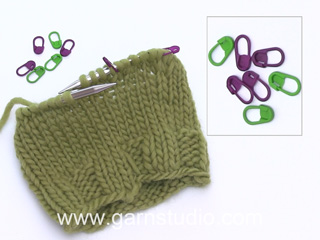
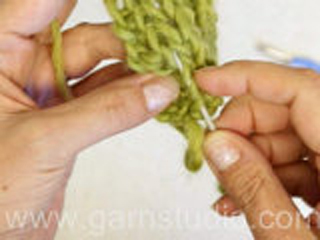
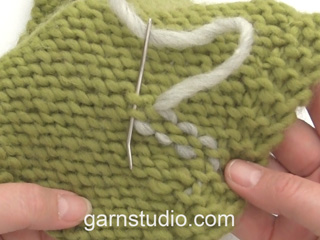
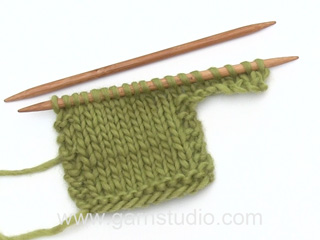

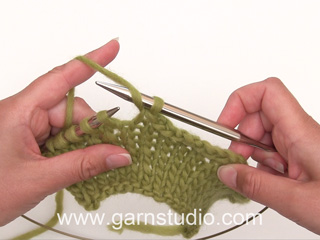

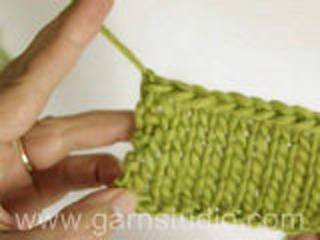
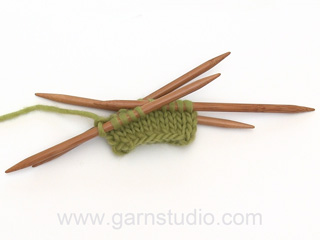
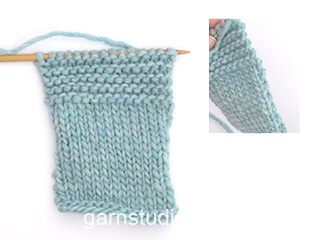
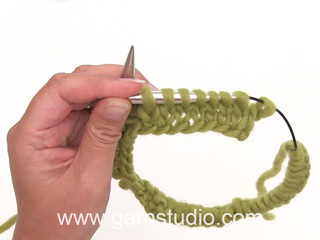
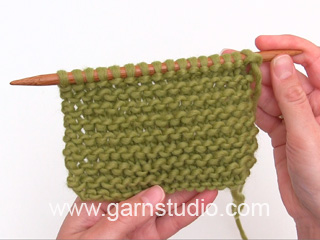
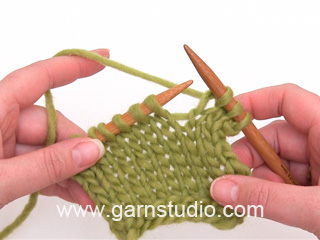
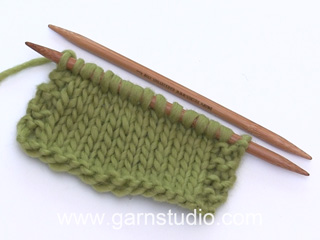
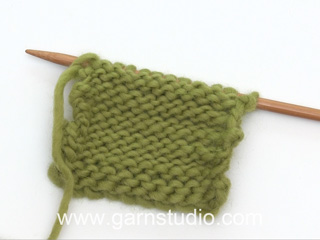
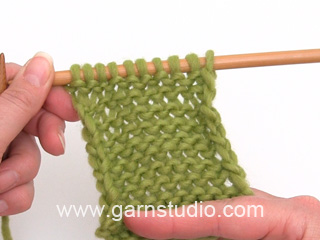
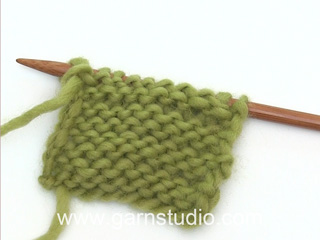

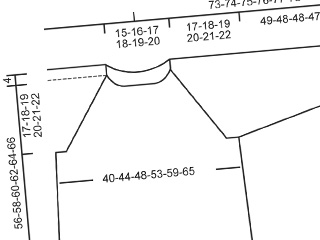
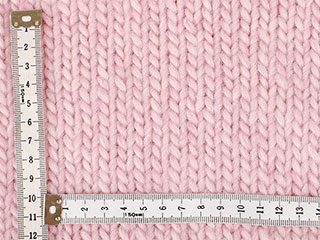
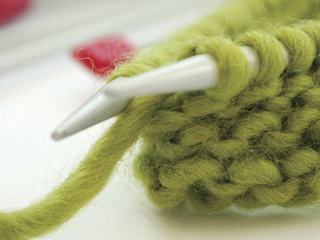
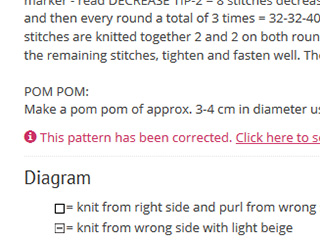
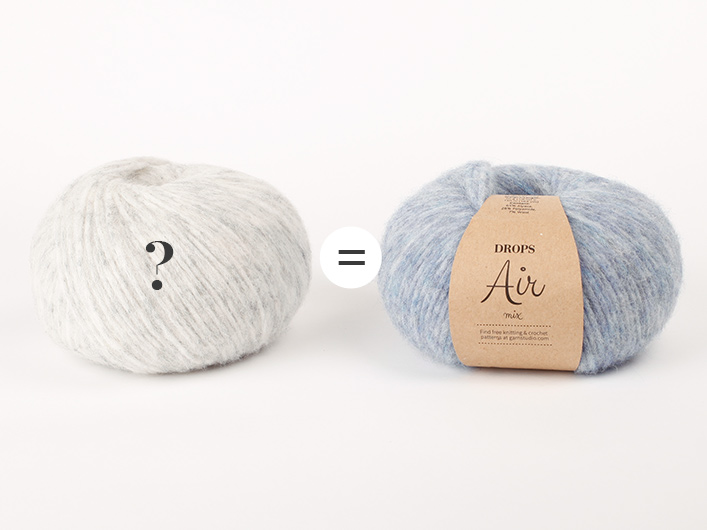

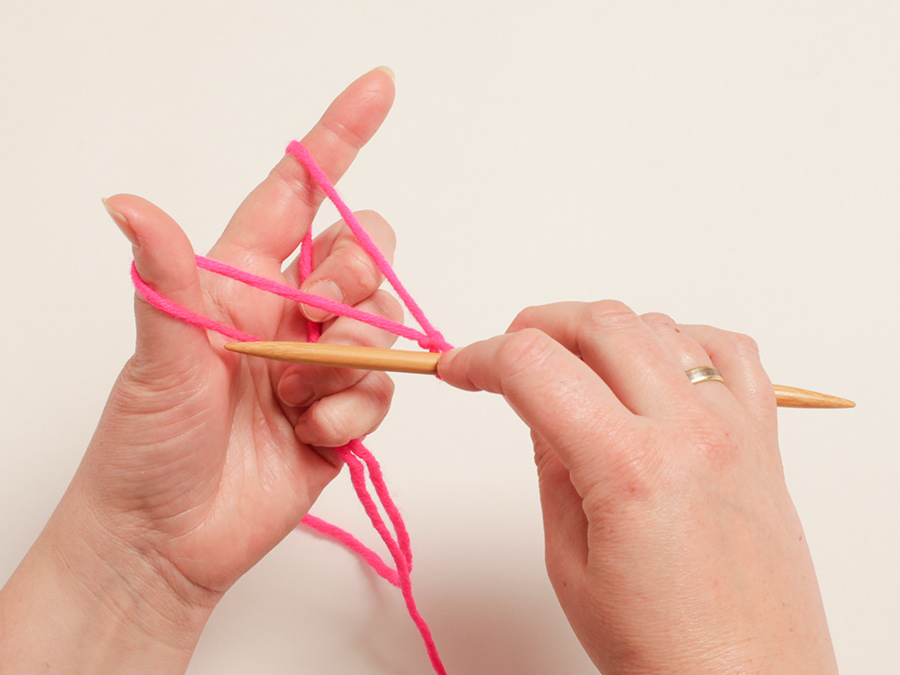
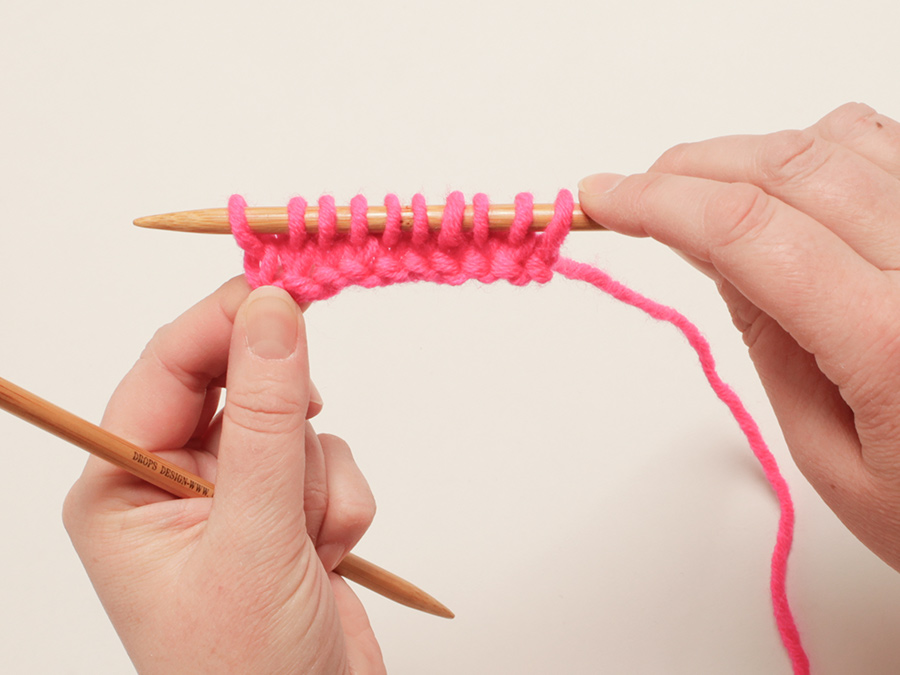

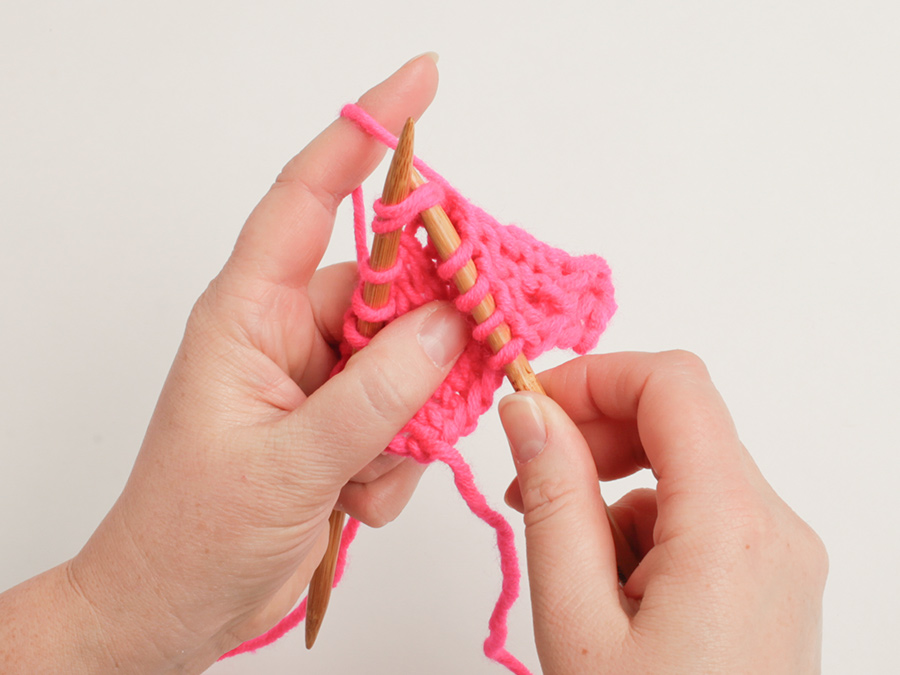
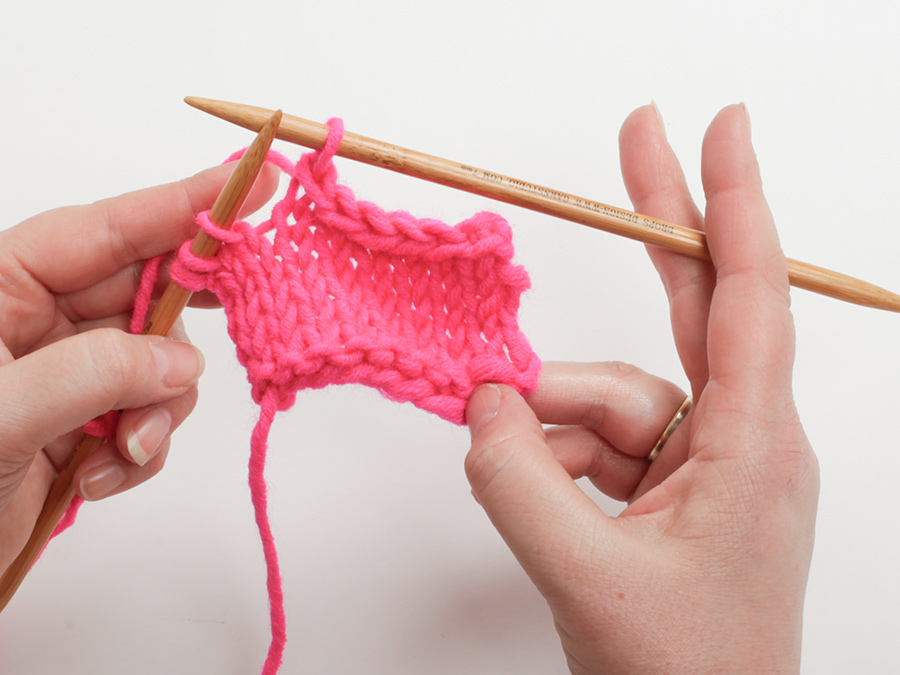
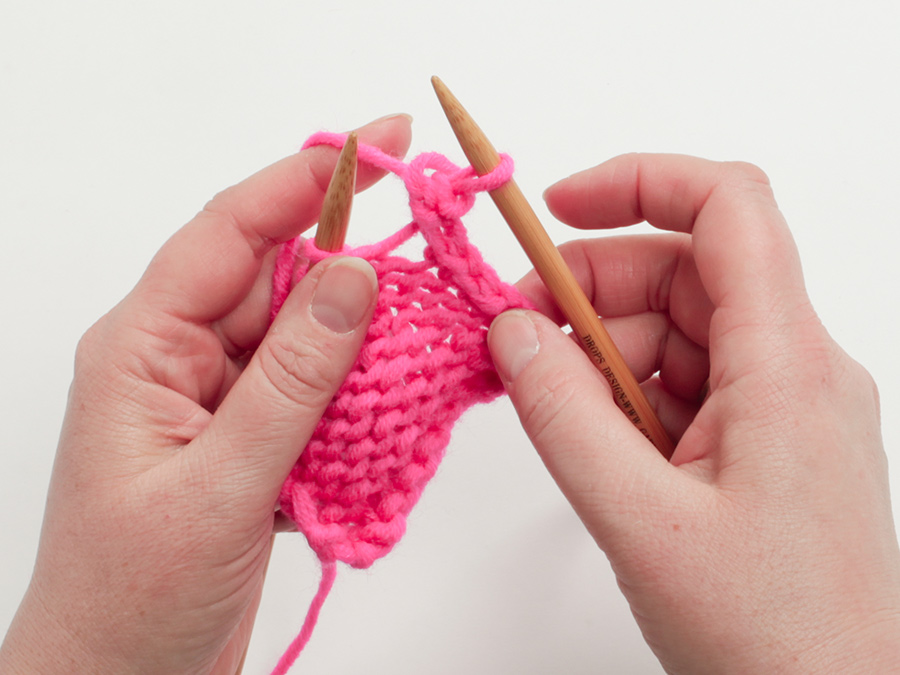




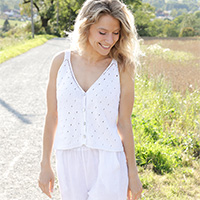
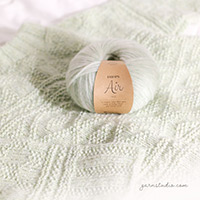
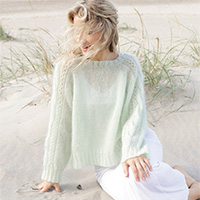

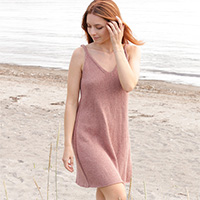
Comments / Questions (37)
Please explain: I have knit the 2 separate collar sections. I don’t understand what the instructions mean after. Thank you
03.02.2024 - 22:14DROPS Design answered:
Dear Cecilia, after working both collar section, place without cutting the strand, cast on the number of stitches indicated for your size, place the second collar section in the needle and knit the stitches of the collar piece that was in the auxiliary needle, so as to join both collar pieces. Then purl 1 row over over all the stitches in the needles. Happy knitting!
04.02.2024 - 23:14Hei. Jeg forstår ikke helt dette med å sy inn halskragen. De to halskantene er betraktelig mindre enn selve halsen. Er det riktig at det skal være 11 cm per halskant?
20.01.2024 - 11:29Guten Tag Ich stricke die Grösse 9/10Jahre und habe nach dem Raglan Teil / Passe lediglich knapp 15cm erreicht statt 20cm. Ich habe nach der Markierung in jeder Hinreihe die Raglanzunahme gemacht und in jeder zweiten Hinreihe die Zunahme für den V-Ausschnitt. Mit den V-Ausschnitt Zunahmen wurde ich etwas früher fertig. Habe ich etwas falsch verstanden? Kann ich einfach noch einige Reihen stricken, ohne zuzunehmen, um die gewünschte Länge zu erreichen? Danke für die Hilfe
24.11.2023 - 20:45DROPS Design answered:
Liebe Raphaela, Ihre Maschenprobe in der Höhe stimmt etwas nicht, aber dann stricken Sie einfach bis die gewünschte Länge. Hier lesen Sie mehr über Maschenprobe. Viel Spaß beim stricken!
27.11.2023 - 07:57Volkomen onbegrijpelijke beschrijving. “Plaats markeerdraden in het werk” terwijl er nog helemaal geen werk is. Echt jammer dit.
19.10.2023 - 17:29Jeg synes ikke strikkefastheden kan passe i højden ?? Skal den måske hedde 27 masker i stedet for 17 Bredden passer fint
08.10.2023 - 18:00Hallo, kann man die Ärmel auch in Reihen Stricken und nicht in Runden? Vielen Dank
08.03.2023 - 12:08DROPS Design answered:
Liebe Birgit, ja sicher, diese Lektion wird Ihnen damit helfen. Viel Spaß beim stricken!
08.03.2023 - 13:40Bonjour, Merci beaucoup de votre aide : les poches sont finies ! En revanche, je ne parviens pas à comprendre les explications pour l'assemblage du col : une vidéo serait-elle disponible pour m'aider, svp ? Merci, bonne journée.
05.03.2023 - 22:41DROPS Design answered:
Bonjour Manoa, merci pour votre retour :) cette vidéo montre (pour un autre type de modèle, regardez à partir du time code 13:00 environ) comment on va assembler les 2 bordures d'encolure ensemble puis les coudre le long de l'encolure dos; en espérant qu'elle puisse vous aider. Bonnes finitions!
06.03.2023 - 10:34Bonjour, Lorsqu'on reprend les poches, il est écrit de veiller à continuer à tricoter la poche sur l'endroit. Mais comme je ne visualise pas (encore ?) comment les poches seront assemblées, je ne comprends pas s'il faut bien les reprendre dans le sens où elles arrivent (endroit comme le reste du rang, ou bien au contraire, à l'envers, quand le reste du rang est à l'endroit... Merci beaucoup de votre aide. Bonne journée.
24.02.2023 - 15:29DROPS Design answered:
Bonjour Manoa, cette vidéo montre comment on tricote ce type de poches et devrait ainsi vous aider à visualiser comment faire. Bon tricot!
27.02.2023 - 09:04Jag stickar strl 9/10. När raglan slut skulle jag ha stickat 20 cm, men jag hade bara 13 cm gjorda. När ärmarna skulle stickas var Kids-Silk garnet slut. Man behöver 150 g inte 100 bara! Dubbla frakter.
12.02.2023 - 13:45Jeg har problemer med strikkefasthed. Er gået helt ned på p 3,5 Det er højden der ikke kommer til at passe Plejer at kunne bruge den oplyste vejledning Håber på hjælp
20.11.2022 - 10:39DROPS Design answered:
Hei Pia. Strikker du med begge kvalitetene samtidig? Du burde på pinne 5,5 få 17 pinner. Om det kun er høyden du får færre pinner, kan du ved raglan, strikke noen pinner ekstra uten økninger for å få de målene som står i oppskriften, se også målene ved målskissen. mvh DROPS Design
21.11.2022 - 11:44